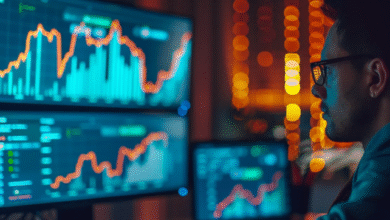How the Internet of Things Is Connecting the World

The Internet of Things (IoT) represents a significant advancement in global connectivity, creating an intricate web of devices that communicate and share information seamlessly. This interconnectedness enhances various aspects of daily life, from the automation of household tasks to the real-time monitoring of health metrics. Moreover, its applications extend into smart cities and industrial sectors, driving efficiency and innovation. As we explore the implications of this technology, it becomes essential to consider how these developments will shape our future interactions and what challenges may arise in this rapidly evolving landscape.
Understanding the Internet of Things
What exactly constitutes the Internet of Things (IoT) is a critical question, as it encompasses a network of interconnected devices that communicate and exchange data, fundamentally transforming industries and daily life.
However, this connectivity raises significant concerns regarding IoT security and data privacy.
Ensuring robust security measures and safeguarding personal information are paramount to harnessing the full potential of IoT while maintaining individual freedoms.
Key Applications of IoT
The Internet of Things (IoT) has catalyzed transformative applications across various sectors, enhancing efficiency, productivity, and user experience.
In smart cities, IoT optimizes resource management and traffic flow.
Industrial automation leverages connected devices for real-time monitoring.
Healthcare monitoring enables remote patient management, while agricultural technology utilizes IoT for precision farming, ensuring sustainable practices and higher yields.
Ultimately, IoT is reshaping industries and societal interactions.
Impact on Daily Life
IoT significantly enhances daily life by integrating smart technologies into everyday activities, thereby improving convenience, safety, and overall quality of living. Key impacts include:
- Smart Home Automation: Streamlined control of household devices.
- Wearable Technology: Enhanced health monitoring and fitness tracking.
- Increased Security: Remote surveillance and alerts.
- Energy Efficiency: Optimized resource usage to lower costs.
These innovations empower users with greater freedom and control.
Future of Connectivity
Future connectivity will be characterized by the seamless integration of advanced technologies, facilitating unprecedented levels of interaction among devices, systems, and users.
5G advancements will empower smart cities to optimize resource management, while edge computing will enhance real-time data processing.
However, as connectivity expands, prioritizing data privacy becomes crucial to ensure that users maintain control over their information in this evolving landscape.
Also read: Tech That Will Shape 2025 and Beyond
Conclusion
In conclusion, the Internet of Things stands as a formidable force reshaping global connectivity, weaving a complex tapestry of devices that enhance efficiency and quality of life.
As this network continues to expand, the promise of a seamlessly interconnected world looms on the horizon, inviting exploration and innovation.
The question remains: how will society harness this technological revolution to foster sustainable progress and redefine human interaction?
The answers lie in the collective pursuit of connectivity’s potential.




